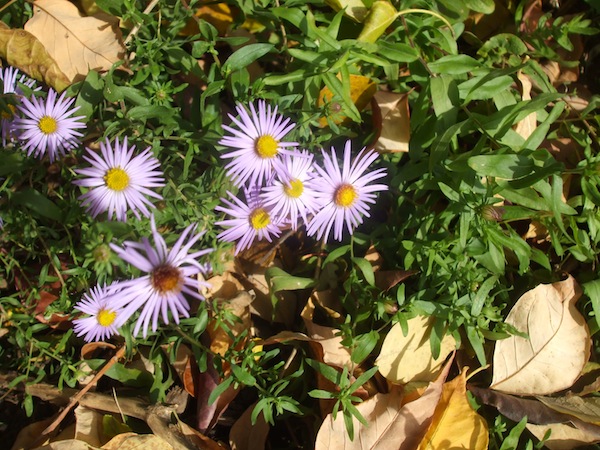
Raydon's Favorite aster got top marks in the Chicago Botanic Garden trial gardens. (C) Jo Ellen Meyers Sharp
In its well-regarded plant evaluation program, the Chicago Botanic Garden trialed asters between 2003 and 2009 and recently released the findings.
Before we start with recommendations, a brief primer. Asters used to have the scientific name Aster, but plant-naming experts (called taxonomists) say that’s no longer the case. Today, we may find asters listed as Aster, Eurybia and Symphyotrichum, depending on their genetic makeup.
In the CBG trials, seven out of nearly 120 asters received five-star excellent ratings, garnered for the number of flowers, form and ability to withstand insects, diseases and drought. Most asters do best in full sun, moist well-drained soil. Some are tolerant of shade and dry conditions.
Here are the winners:
‘Jindai’ Aster tataricus spreads by underground stems, called rhizomes, to develop 32-inch wide colonies. It will get about 4 feet tall before its violet-blue flowers bloom in late September into late November or early December.
The species wood aster (Eurybia divaricata) and the cultivar ‘Eastern Star’ are among the few asters that tolerate shade ‘Eastern Star’ gets 21 inches tall with a 36-inch spread. The cultivar’s 1 ¼-inch white flowers are almost twice the size of the species. These bloom from late August into November.
‘Snow Flurry’ heath aster (Symphyotrichum ericoides) only gets 8 inches tall but has a 48-inch spread. “No description of the small white flowers does justice to the actual stunning floral display,” writes Richard Hawke, who oversees the CBG evaluations. ‘Snow Flurry’ is also tolerant of dry conditions.
The species of calico aster and the cultivar ‘Lady in Black’ (S. lateriflorum) have white flowers. The cultivar gets 34 inches tall and 50 inches wide with purple foliage.
My favorite is ‘Raydon’s Favorite’ (S. oblongifolium), a long-blooming cultivar of a native species. The lavender-blue flowers emerge in August and continue into November. This plant gets about 3 feet tall and 4 feet wide.